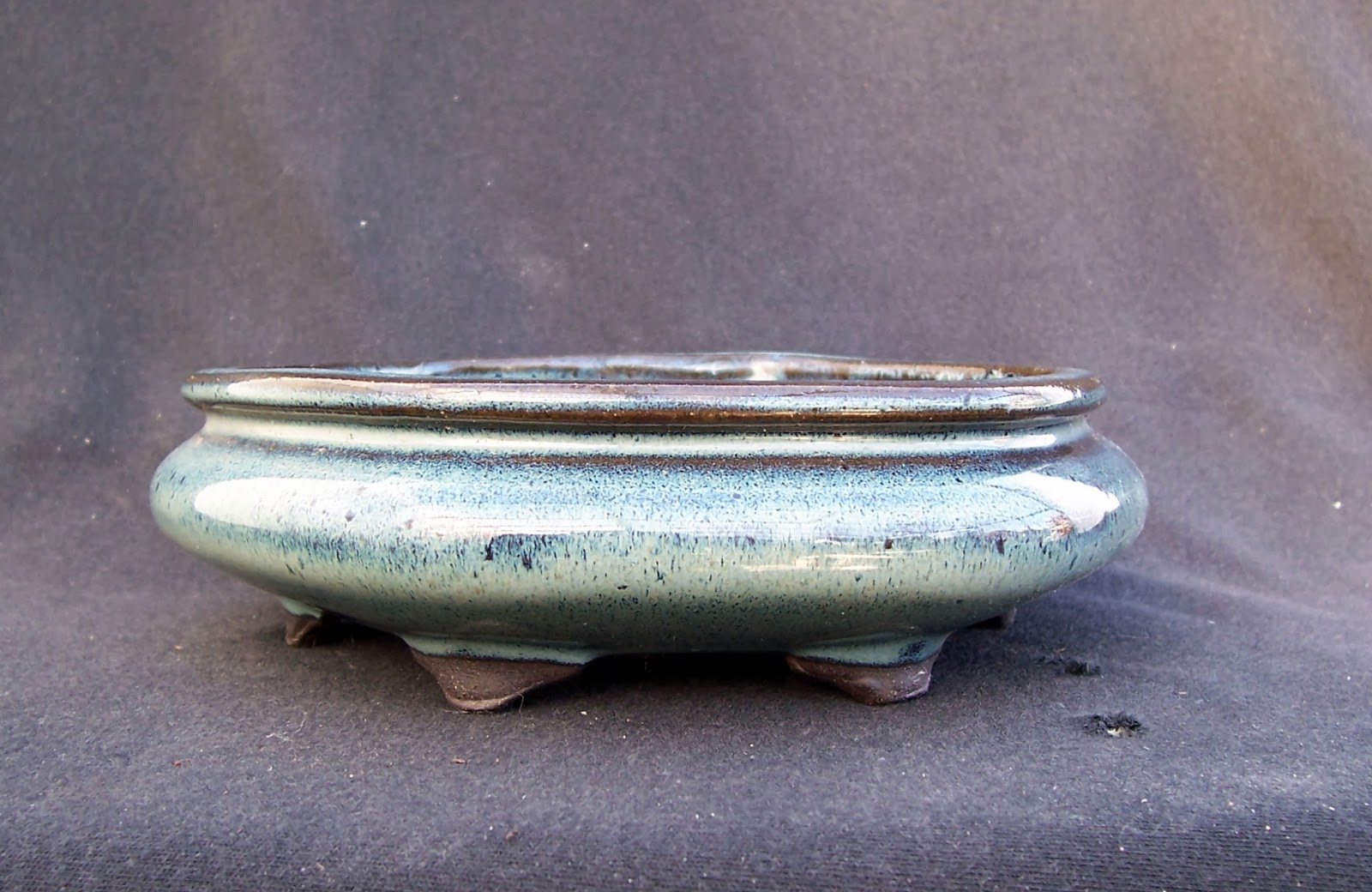So, what has sex to do with bonsai?
One occasionally hears about masculine pots and feminine pots. The concept of boy pots and girl pots is not intuitively obvious and begs for an explanation. What is this all about?
The story starts with shows. One frequently hears that a person is going to show one of their trees at the next show. This misses a vital point. One does NOT show a tree. That literally would mean that you take the tree out of the pot and plunk it down on the show bench, roots, dirt and all. Clearly there is more to it than that. The tree is in a pot and on a stand when it is shown. This means that one presents a composition consisting of a tree, a pot and a stand.
While the tree is the focal point of the composition, the other two items are crucial for the artistic success of the composition. All three components must be of the finest quality to make a first-class composition. If one of the components is crummy, the whole composition is crummy. An obvious example would be a composition consisting of a beautiful tree and an elegant stand, but includes a badly chipped pot. The pot reduces the merit of the composition to at best ho-hum, or to “what was the exhibitor thinking”, no matter how good the tree and the stand is. All the feverish a ctivity before a show to clean and oil pots and to polish stands is directed to ensure that each component of the composition is at their very best possible condition.
ctivity before a show to clean and oil pots and to polish stands is directed to ensure that each component of the composition is at their very best possible condition.
There is also a subtler factor at work. You can have perfect individual components and still have a less than successful composition. For example, the pot may not compliment the tree even though it is an excellent pot. So how do we choose a pot and a stand that allows the very best presentation of our tree?
Japanese masters usually have a large number of pots and stands to choose from. They select those that make the tree “look good”, and they are generally successful. It is all pretty easy if you have served a 5 to 10-year apprenticeship, followed by a dozen years or more of experience as a professional bonsai artist. All the while, you have had the opportunity of studying the finest compositions at all the top shows in Japan. Unfortunately, most of us do not have this extensive background. How can we choose pots and stands that complement our trees?
Here is where sex enters the picture. In an effort to make a proper choice a little more objective, one approach is to ascribe masculine and feminine properties to each of the three components of the composition. Simply put, masculine properties are seen as strong and straight, and feminine are delicate and curved. Matching a tree, pot and stand with similar properties will give the best overall composition. For example, a feminine tree will look best with a feminine pot and stand.
Let’s look at these two properties in detail. A masculine tree is one that has a straight trunk, has strong root structure, and powerful, flared base. The tree has the appearance of great age with rough bark and deadwood. A masculine pot is formal, has sharp corners, heavy construction, and has dark color. A masculine stand has heavy construction and straight legs. A feminine tree has the appearance of gentleness and grace. The bark is smooth, indicating youth. A feminine pot has a curved shape and rounded corners. It is lightly constructed and generally light colored. A feminine stand has curved legs and light construction.
A limitation of this approach to display is that while classification of components into the two categories in many cases can be obvious and helpful, some components are either not clearly masculine or feminine, or have properties or both.
Division of components into the broad categories of masculine and feminine can provide us with a helpful yardstick to use when choosing a pot and a stand. Attempting to classify your trees, pots and stands into having either masculine or feminine properties is a great place to start in choosing the pot and stand which best compliments you tree.

